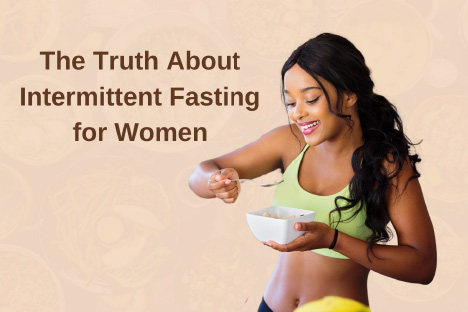The Truth About Intermittent Fasting for Women

Intermittent fasting (IF) has become one of the most popular health and wellness trends in recent years. From celebrities to fitness influencers, everyone seems to be praising its benefits for weight loss, mental clarity, and overall health. But is intermittent fasting equally effective and safe for women? The answer isn’t as straightforward as you might think.
Let’s break down the science and realities of intermittent fasting specifically for women.
What is Intermittent Fasting?
Intermittent fasting is not a diet, but an eating pattern that cycles between periods of eating and fasting. Common approaches include:
- 16/8 method: Fast for 16 hours and eat during an 8-hour window
- 5:2 method: Eat normally for 5 days, restrict calories to 500–600 for 2 non-consecutive days
- Alternate-day fasting: Fast every other day
The idea is to give your body a break from constant digestion, allowing it to reset and repair.
Potential Benefits for Women
Women may experience many of the same benefits as men when practicing intermittent fasting:
- Improved insulin sensitivity
- Weight loss and fat burning
- Reduced inflammation
- Increased mental clarity and energy
- Better digestion and gut health
The Female Body and Fasting: Why It’s Different
Women’s bodies are hormonally different and more sensitive to calorie restriction and fasting. The female body is biologically designed to be alert to changes in energy availability, especially to protect fertility.
Here are some things to consider:
- Disruption in hormone balance: Extreme fasting may lead to irregular periods, fertility issues, or hormonal imbalances.
- Stress response: Prolonged fasting can raise cortisol levels, increasing stress and negatively affecting health.
- Slowed metabolism: If not done correctly, intermittent fasting may lead to muscle loss and a slower metabolic rate.
Best Practices for Women Trying Intermittent Fasting
If you want to give intermittent fasting a try, here are some woman-friendly tips:
1. Start Slow: Begin with a 12/12 or 14/10 fasting window. Gradually increase fasting time if it feels right.
2. Listen to Your Body: If you feel fatigued, dizzy, or irritable, your body may be telling you to slow down or adjust.
3. Focus on Nourishment: Make sure your eating windows include nutrient-dense meals that support your hormones, energy, and well-being.
4. Avoid Fasting During Certain Phases: Consider avoiding fasting during your luteal phase (the week before your period) when your body needs more fuel.
5. Stay Hydrated: Drink plenty of water, and include herbal teas and electrolyte-rich drinks if needed.
6. Don’t Overdo It: Fasting every day may not be necessary. Try a few days a week or alternate days to see how your body responds.
Who Should Avoid Intermittent Fasting?
While IF can be beneficial, it’s not for everyone. Women who are pregnant, breastfeeding, have a history of disordered eating, or suffer from chronic stress or adrenal fatigue should avoid fasting unless supervised by a healthcare provider.
Final Thoughts
Intermittent fasting can be a helpful tool for health and wellness, but it’s not a one-size-fits-all solution—especially for women. The key is to approach it with mindfulness, flexibility, and a focus on long-term well-being.
Your Challenge:
If you’re curious about intermittent fasting, try a gentle 12-hour fast a few times this week and journal how your body feels. Always prioritize nourishment, balance, and self-care. Your body knows best!




